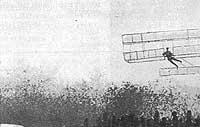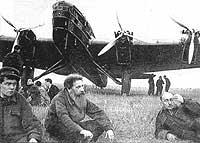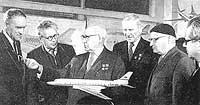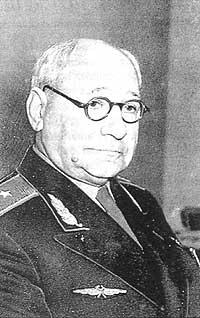Andrei Tupolev. Pioneer in Aviation

At that time there was a great fondness for aviation in Russia. Many people approached the fields of Jodinka to see the first flights, where the main character was N.Zhukovski, especially among designers and plane pilots.
The planes that were then in Russia were imported and Zhukovsky wanted to create a group of designers there. One day the University of Moscow organized an aeronautical exhibition and the student Andrei Tupolev contacted Mr. Zhukovski. Zhukovski brought together the fastest students by organizing an aeronautical laboratory. For the laboratory, however, he needed an aerodynamic tunnel and took care of it to Tupolev.
Then few knew how to make aerodynamic tunnels, but Tupolev did his calculations and left the tunnel ready to work. Then, with more calculations, he designed and built a new glider. Taking advantage of a wind wave, the young Tupolev took off with his new glider and landed on the other bank crossing the river Jauza.
In 1911 he had problems with the police. He was arrested for his participation in the revolutionary mitines. Soon his father died in Pustomazobo, and after going there they let him live there. Then Zhukovsky and his friends had to touch his and two.

When the First World War broke out, the situation of the aviation industry was unfortunate. That is why the generals turned to Zhukovski to do something, but were denied the design office and the experimental aircraft factory.
Years later, in 1917, the Soviet Union underwent a revolution and in 1918 the Central Institute of Aerohydrodynamics was created, in which Tupolev assumed the organization, preparation of materials and laboratories, design, construction, etc. should correct them.
Zhukovsky was sick at the end and Andrei Tupolev was always at his side. Wood? Double-sided?
The truth is that at that time they were mainly made biplanes of wood and only the German Junkers made experimental planes of duraluminio. However, Tupolev then had clear ideas: metallic and monoplanar planes had to be made so that they had little air resistance. To improve the load capacity, speed, distance and flight height of the plane, higher power engines were needed.

In 1922 and 1923, Tupolev, 35, built the ANT-1 aircraft, a single-plane made of wood and aluminum. That plane was a single engine of 25 horses.
In 1924 the model ANT-2 was built. It was totally metallic and had two seats: the driver and the passenger. The metal had good aerodynamic performance and good mechanical strength.
In 1925 the models ANT-3 and ANT-4 and the military version of the latter were built: Bomber TB-1. Plane ANT-3 M. The pilot Gromov, Moscow – Konisgberg – Berlin–Paris - Vienna - Prague -Moscow, made the tour in three days beating all the brands until then. Gromov traveled more than 7000 kilometers.
Tupolev was then planning to carry out heavier planes of great load capacity and long distances. To do this, in the ANT-4 model the engines were on the slopes and inside the fins the fuel tanks. This system allowed to reduce the weight of the fuel of the wings during the flight of the plane and the rest of the aviators began to follow the same system.

In 1929 Tupolev developed the ANT-7 model with nine seats ANT-9. In 1930 the ANT-6 and ANT-8 aircraft took off and the following year the ANT-14, with capacity for 40 passengers.
At the same time, several international flights were made. From Moscow to Tokyo it was built in 1927 by an ANT-3 and the ANT-4 ran over 10,000 kilometers from Moscow to North America.
To better study its new models, Tupolev used wood models on a natural scale. Special difficulties were overcome when building the ANT-20 model, the largest in the world. The plane was 63 meters wide and 35 meters long, the landing wheels had two meters in diameter and its eight engines could give a power of 7,200 horses. Until 1950 it was the biggest plane.
In 1934, the Tupolev ANT-25 hit the world record by flying 12,411 kilometers in 75 hours. The ANT-25 had two particularities: on the one hand, the landing gear was foldable and, on the other, the cantilever was twice as long as the plane.

During the Spanish Civil War, the ANT-40 bombing, designed by Tupolev, mocks against Nazi planes. The ANT-40 was faster than the rest.
The propeller was subsequently replaced by reaction engines and in 1946 the Yak-15 and MIG-9 reactors were presented, as well as the UA-12 bomber. Tupolev then built the UA-16 reaction bombing. It was very fast (it reached a speed of 1000 km/h) and was the basis for the UA-104 passenger plane. The model UA-104 had 100 seats, exceeded 800 km/h and could travel 3000 km without stopping.
Soon after Tupolev launched the world's largest aircraft. The UA-114 could transport 170 passengers at 900 km/h. From Moscow he arrived in New York in 12 hours.
It is followed by the planes UA-124, UA-134 and UA-154, as well as the model UA-144, the first suicide plane for passengers.





